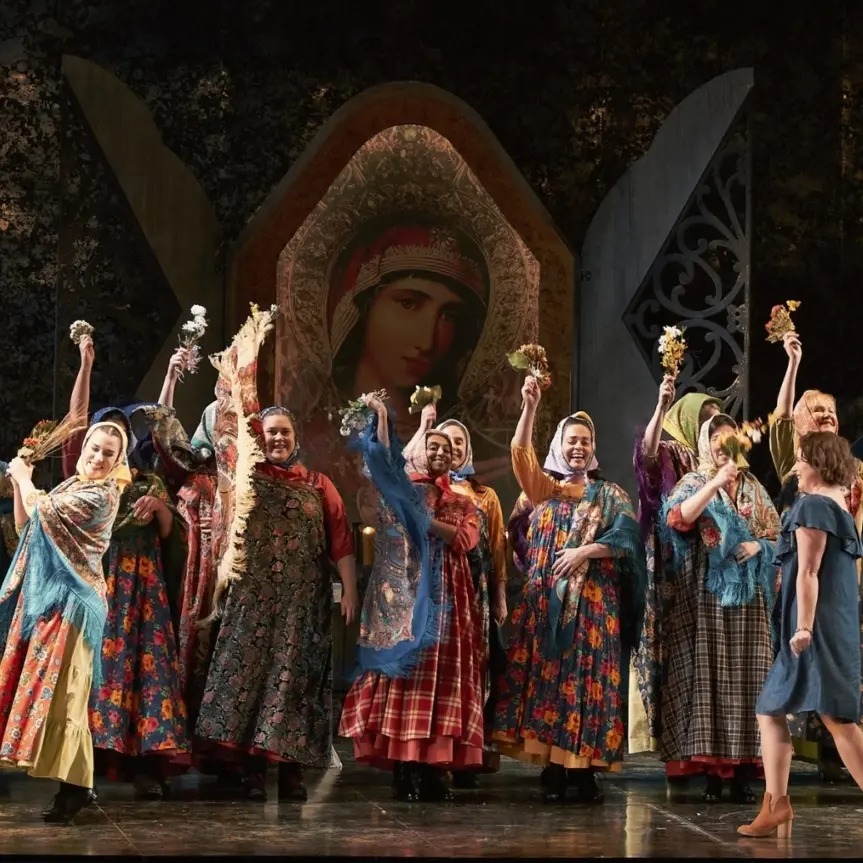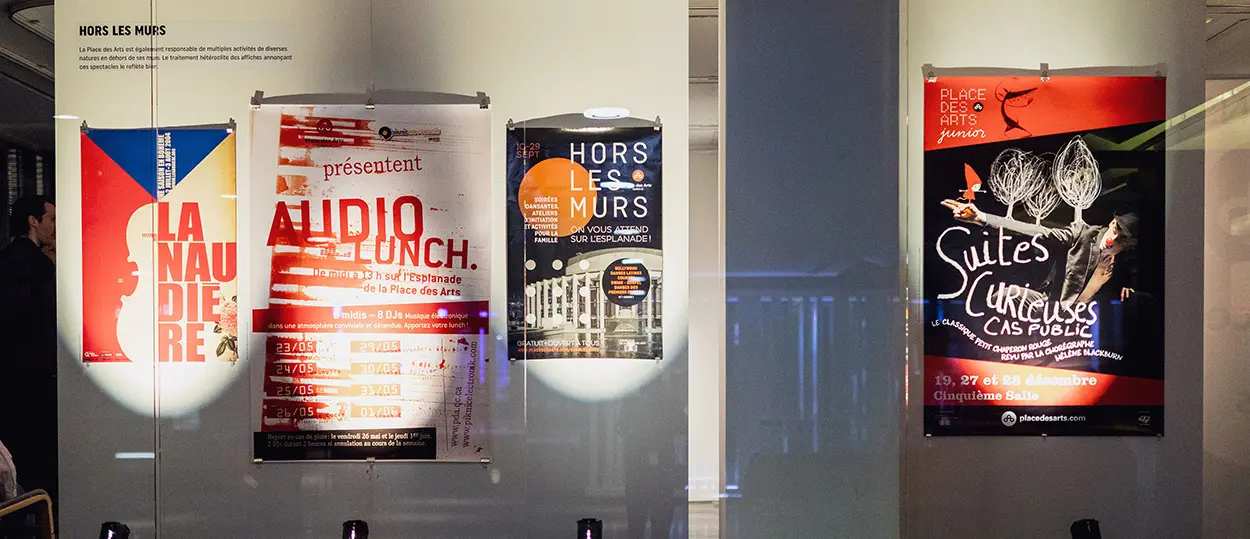60 YEARS OF SHOW POSTERS: SPOTLIGHT ON GRAPHIC ARTS
Often considered too commercial by visual arts purists, graphic design is nonetheless a form of expression that illustrates its era, both through the techniques used and the social movements that inspire it. This desire to showcase its creativity and richness has become a credo for Marc H. Choko, professor emeritus at the Université du Québec à Montréal’s School of Design, to whom we had a chance to speak. He is the curator of the exhibition 60 ans de spectacles en affiches (60 Years of Show Posters), which is being presented as part of Place des Arts’ 60th anniversary celebrations. The exhibition features a range of posters for shows presented within the venue’s walls since it opened. Let’s shine the spotlight on how graphic arts have evolved in the entertainment sphere…

Shown : Clothilde Cardinal, Marc H. Choko, Marie-Josée Desrochers, photo : Thibault Carron
What is so fascinating to you about the history of the posters on display?
Marc H. Choko: A good poster is a work of art, that’s undeniable. But it’s a work of art of a very particular nature, because there is a client, it belongs to a specific period, and it can be part of all sorts of events.
Technically speaking, we see how the graphics and printing methods have evolved. We notice the transition from drawing to photography, then a return to drawing.
It also speaks to us about our society. Through the posters of the first shows presented at Place des Arts, we see that several foreign artists—like Charles Aznavour and Juliette Gréco—were invited to help raise the establishment’s profile. We witness certain theatre companies passing through and contributing to interesting visual production. What is fascinating to see is how the same play or the same opera can be approached in different ways depending on the graphic designers.
Can you tell us about some of your finds?
The first poster for Place des Arts, to my knowledge, that I know of at least, is the one for the fundraising campaign for its construction in 1959. It was created by a great Montreal graphic designer, Allan Harrison. He was not a traditional poster artist—quite the contrary! He was a resolute modernist, perhaps even a symbolist. The poster was abstract… it’s a type of graphic design that is completely at odds with what would come later.

Give to Make it a Reality par Allan Harrison, 1959, Place des Arts Archives.
Duceppe, in the 90s, had the chance to welcome one of the great Polish poster artists, Mieczyslaw Gorowski, who came to Montreal to teach at the School of Design for a year. He was hired by Duceppe to design several posters. They’re very original because they reflect the very artistic and intelligent approach of the Polish school. Gorowski managed to summarize what audiences were going to see as a play by illustrating a specific powerful moment. Those are the ABCs of a good poster, but the execution was impressive.

Pictured : posters of Gorowski, photo : Thibault Carron
As for the legendary Vittorio Fiorucci, he produced posters for the Opéra de Montréal for a while, and they are certainly among the most beautiful work. That being said, there have been others—radically different, but interesting—such as the posters by orangetango or Mario Mercier.

Pictured: Posters by Vittorio; Photo credit: Thibault Carron
Why is it so complicated to find old posters in Quebec?
When I came to Quebec in 1969, I had already been collecting posters for almost 10 years. I noticed that here, once an event was over, the old posters—rather than being preserved—were used to insulate the floors and walls of barns or as kindling. So, I worked to establish a conservation process in Quebec. In 1992, we finally got legal deposit—including the name of the printer, the date, and two copies of the poster—at the Bibliothèque et Archives nationales du Québec (BAnQ). Before then, we didn’t even know who had created most of the posters in Quebec. It’s a very fragmentary story.
When I wrote the book L’affiche au Québec, it required a lot of research. Fortunately, a few important figures were still alive at the time, but very often their work had disappeared. For the exhibition, that’s also what we were faced with. Sophie Bélanger, at Place des Arts’ archives, and Danielle Léger, from the BAnQ, did a huge amount of research to list everything, but they realized that a lot was missing. I had to get reprints of posters from 2014… that’s not so long ago…
It’s like there was less respect for this art form. At the time, even graphic designers who created posters kept quiet about it, so as not to harm their artistic careers happening at the same time. Posters were what we referred to as commercial art… which art historians looked down on.
How do you feel about graphic production today?
I think we’ve definitely made our way out of school. Everyone knows what’s happening elsewhere in the world. I think the danger is that posters are no longer sufficiently culturally influenced.
Very often, good poster artists have immersed themselves in their environment and this is reflected in their work. If I look at the output of the Swiss greats—artists of the likes of Claude Kuhn or Werner Jeker—these are people who continue to make fabulous posters. Where there is a tradition of poster-making (in France, for example), young people are creating interesting things in very varied styles. Of course, artificial intelligence is being introduced into all this, but I’m not yet sure if it’s a tool that will bring us something new. If, despite the millions of creations all around the world, we always end up with the same kind of posters, we have a problem—no one is going to get noticed. And, ultimately, that’s the goal of a good poster.
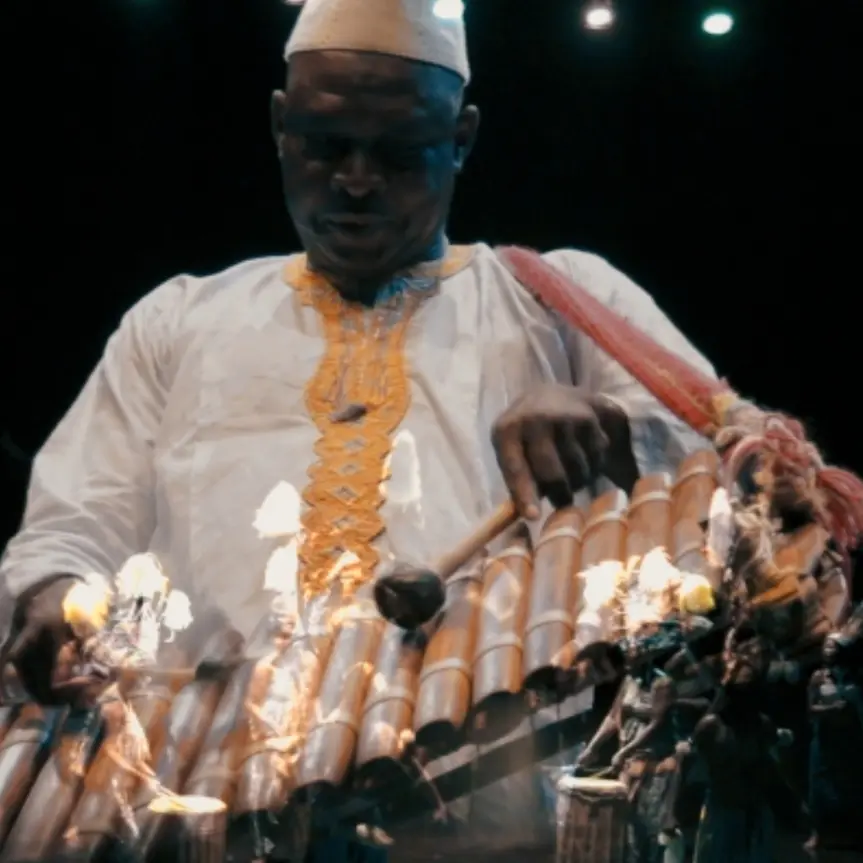
Les Ballets Africains: A Longtime Love Affair with Montreal
Les Ballets Africains is making a spectacular return to Montreal. Founded in 1952, the company come back with a performance presented as part of Arts Monde serie, in collaboration with Nuits d’Afrique, which is celebrating its 40th anniversary.
Article Interviews Show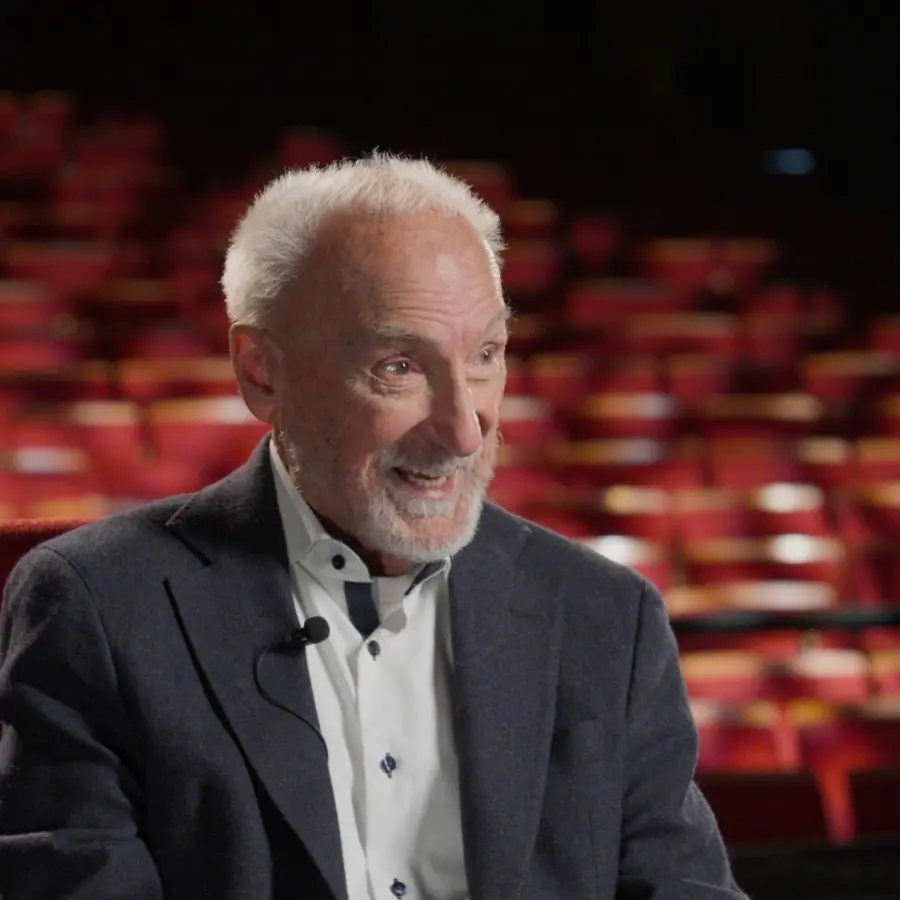
Yvon Deschamps : une vie portée par la scène
Comedian Yvon Deschamps has performed over 500 shows at Théâtre Maisonneuve at Place des Arts in Montreal.
Vidéo Interviews Artist
Place des Arts: The Heart of Holiday Magic in Montreal
In December, Place des Arts transforms into a veritable enchanted kingdom where the magic of the holiday season is brought to life! Within our walls and all around us, come enjoy festive experiences that are sure to thrill young and old alike.
Article Recommendations Event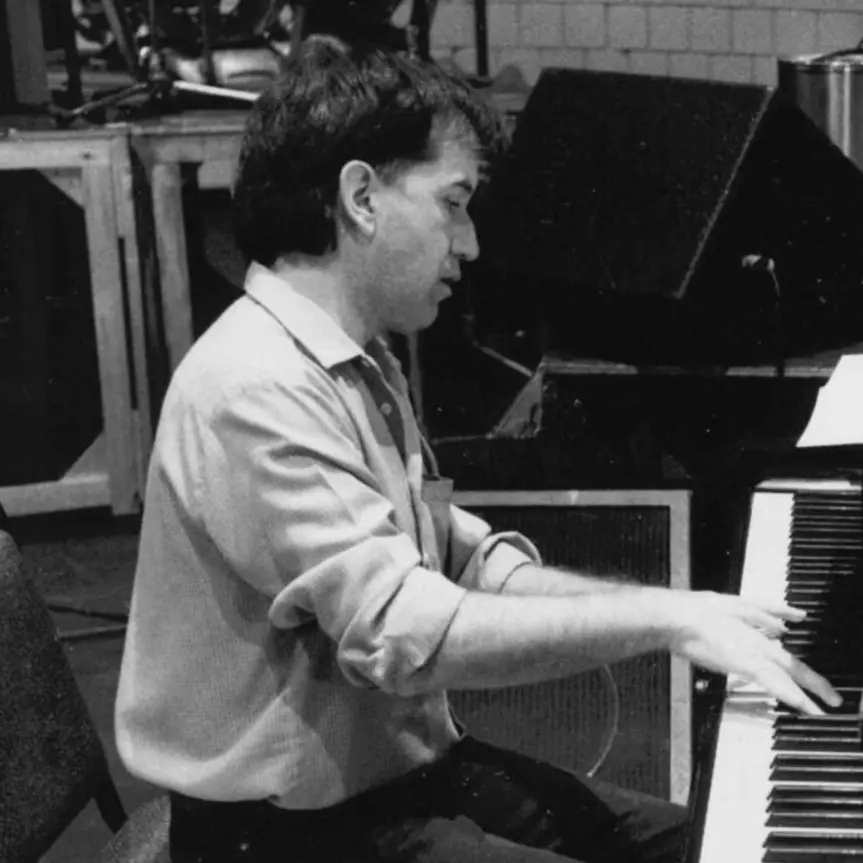
André Gagnon: A Tribute to the Visionary Behind “Neiges”
For the concert Neiges: The OM Celebrates André Gagnon, conductor Léa Moisan-Perrier and pianists Julie Lamontagne and Rousso relate how this luminary gave Quebec instrumental music a certain level of prestige.
Article Portraits Tribute